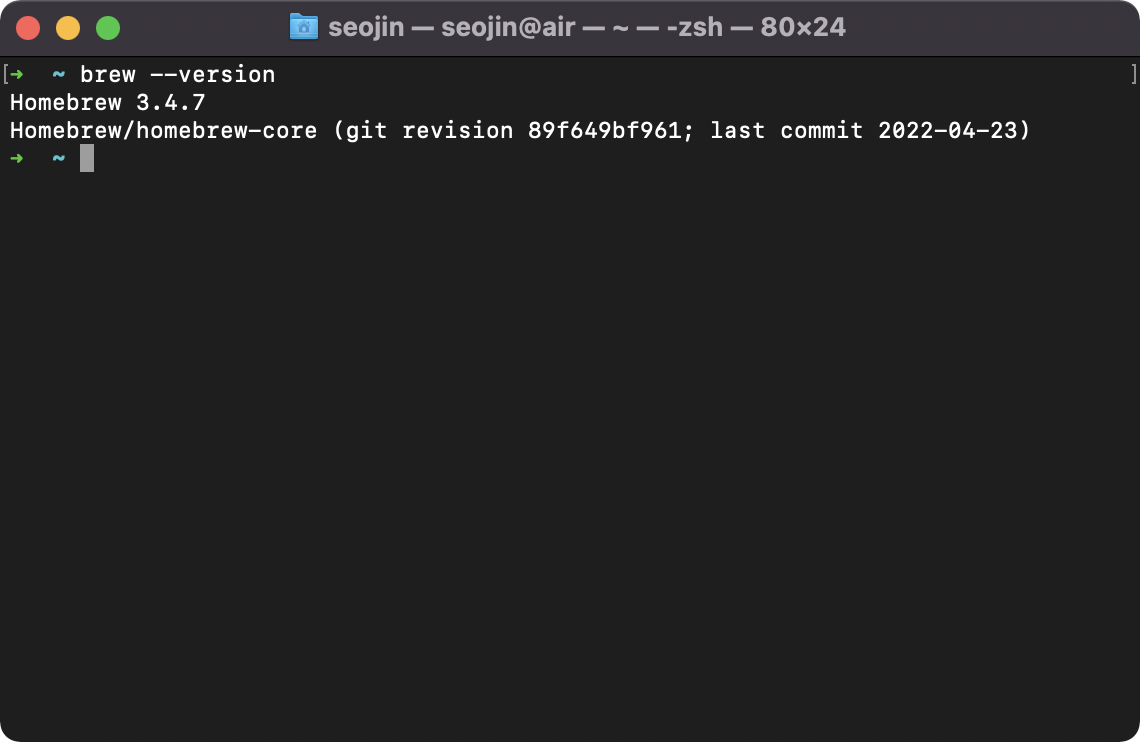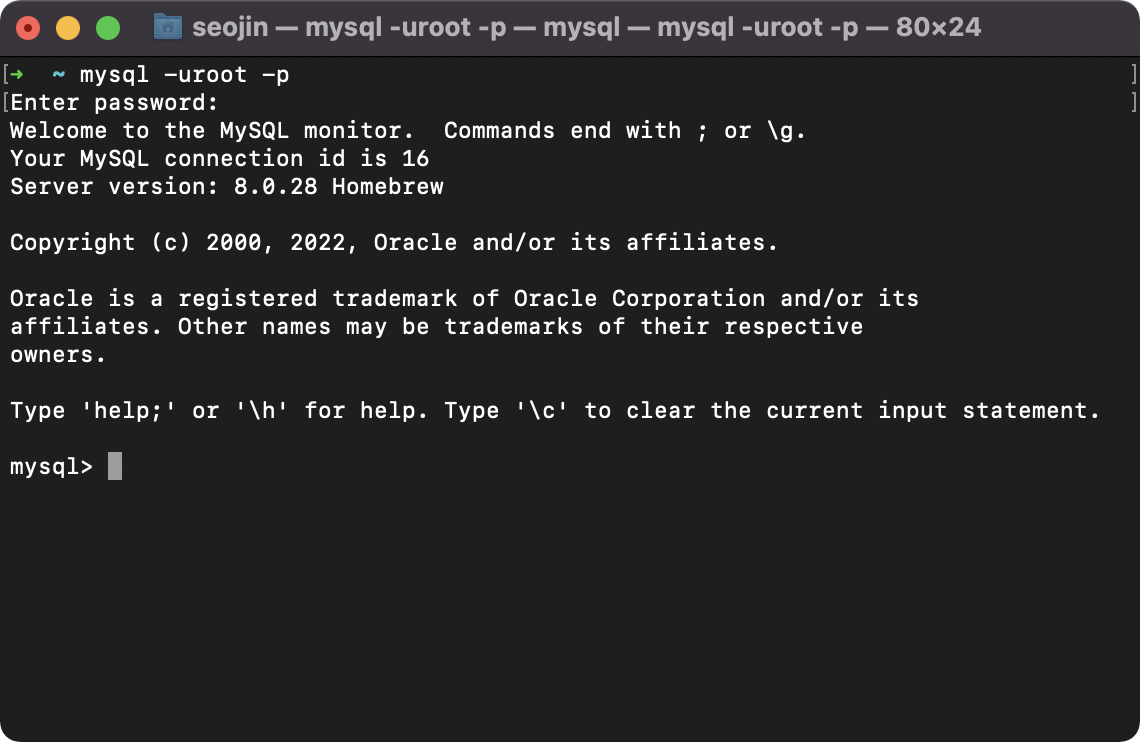[MySQL] 맥에 homebrew 사용해서 MySQL 설치하기
- 개발툴/Homebrew
- 2022. 4. 23.
기존에 오라클을 통해서 맥에 MySQL을 설치하는 방법을 알아봤습니다. 하지만 Homebrew를 통해서 설치하는 방법도 있어서 기록합니다. 설치가 더 간단하고 설정이 편하다는 장점이 있습니다. 맥을 사용하는 사람들은 아마 Homebrew에 대해서 들어보신 적이 있을 텐데요. Homebrew는 맥의 패키지 관리 툴입니다.
홈브루 확인 및 설치
▼ Homebrew가 설치되어 있는지 확인합니다.

▼ 만약 homebrew가 설치되어 있지 않다면 아래 명령을 입력해서 Homebrew를 설치합니다.
▼ MySQL을 설치하기 전에 업데이트 명령을 해줍니다.
MySQL 설치
▼ brew search mysql 명령으로 mysql 관련된 레포지토리를 확인합니다.
▼ search 명령으로 검색해서 설치하거나 다음과 같이 그냥 mysql이라고 입력할 경우 최신 버전을 설치하게 됩니다.
▼ MySQL 설치가 완료되면 다음 명령어를 통해서 서버를 실행시킵니다.
MySQL 서버 설정
▼ 서버가 실행되었다면 다음 명령어를 입력해서 MySQL 기본 설정을 시작합니다.
MySQL 서버를 설정하기 위해서 5가지 질의를 합니다.
y 또는 n을 입력해서 질문을 통화할 수 있습니다.
1. Would you like to setup VALIDATE PASSWORD component ?
패스워드를 복잡하게 설정할지를 묻습니다. 저 같은 경우는 테스트용로 사용할 생각이라서 NO로 했습니다. 만약 YES로 하게 되면 비밀번호 규칙이 생겨서 대소문자 및 특수기호를 포함해야 하기 때문에 귀찮아집니다.
y 또는 n을 입력했다면 이제 비밀번호를 설정합니다. 원하는 패스워드를 2회 입력합니다.
2. Remove anonymous users?
익명 사용자를 제거할 지 묻습니다. 저는 NO로 설정했습니다.
3. Disallow root login remotely ?
루트 사용자의 원격접속을 허용하겠냐는 질문입니다. 보통 루트 사용자는 원격 허용을 하지 않는 것이 좋습니다. NO라고 입력합니다.
4. Remove test database and access to it ?
테스트 데이터 베이스를 삭제할지 묻습니다. 저는 YES로 입력했습니다.
5. Reload privilege tables now ?
변경된 테이블 권한을 리로드 할 것인지 묻습니다. YES로 입력합니다.
MySQL 서버 접속
▼ 다음 명령어를 통해서 MySQL에 접속합니다.

MySQL 서버 종료 및 삭제
▼ 서버를 종료하려면 다음 명령어를 입력합니다.
▼ MySQL을 제거하려면 다음 명령어를 차례대로 입력해줍니다.
'개발툴 > Homebrew' 카테고리의 다른 글
| [Homebrew] Node.js, npm 설치 (0) | 2023.04.26 |
|---|---|
| [Homebrew] 실리콘 M1 맥 Mac 홈브루 설치하기 (0) | 2022.08.08 |